The Apple Visual Almanac is a LaserDisc based multimedia kit designed by Apple for use in American schools as a teaching aid. The kit was only released to schools and never sold as a commercial product.
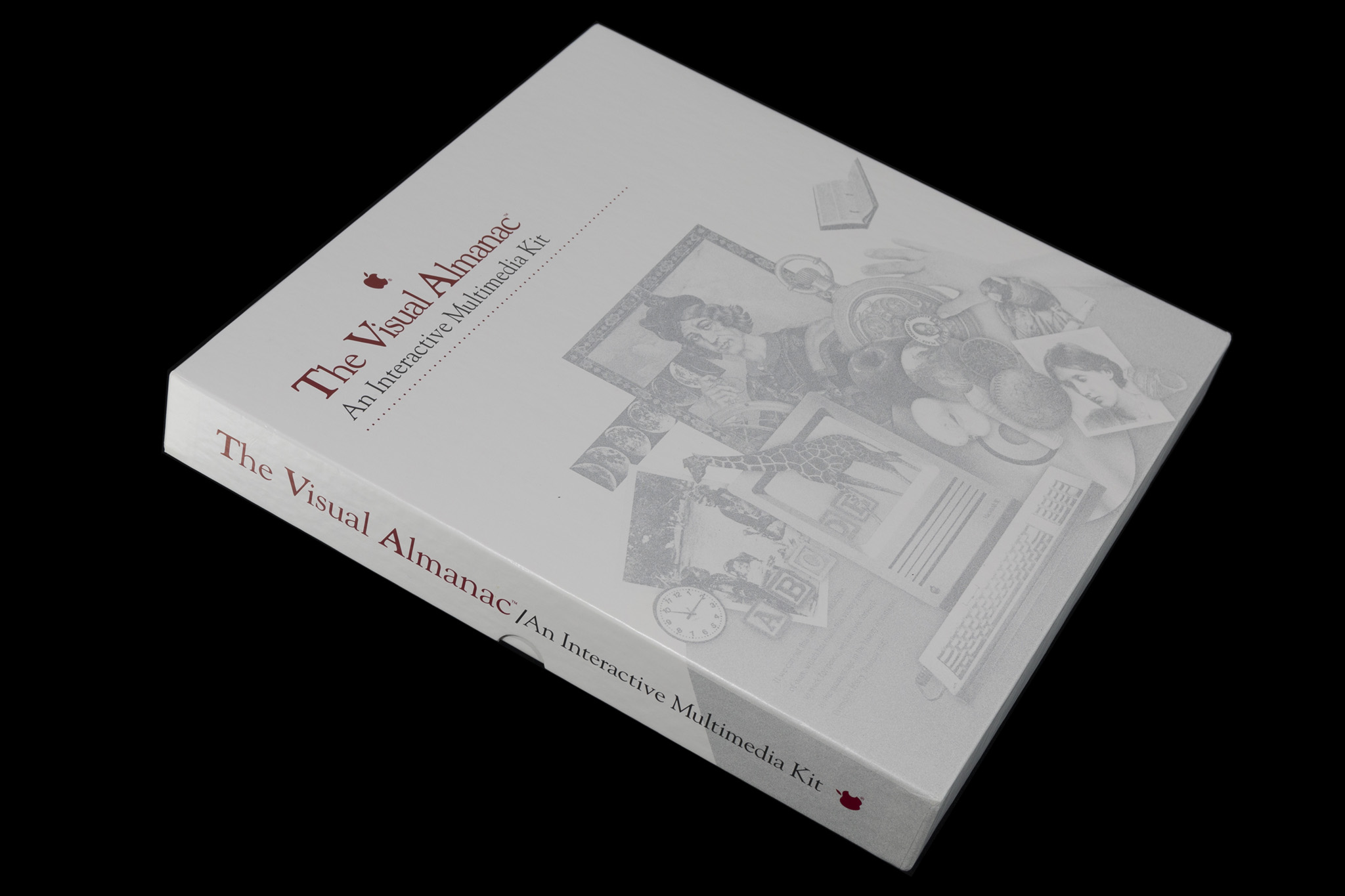
The Visual Almanac was designed to work with an Apple Macintosh computer connected (via serial) to a LaserDisc player.
Contents
Supported hardware
The Visual Almanac supported the following Apple Macintosh computers:
- Macintosh Plus
- Macintosh SE
- Macintosh II
In addition, the following NTSC LaserDisc players were supported (although the Pioneer LD-V4200 was the recommended player):
- Pioneer LD-V4200
- Pioneer LD-V6000A
- Sony LDP-1500
- Sony LDP-2000
- Hitachi 9550
Kit contents
The kit consisted of a LaserDisc, 3 floppy discs, a CD-ROM and the Visual Almanac Companion guide. These items are described in more detail below.
LaserDisc
The LaserDisc is an NTSC format LaserDisc with analogue audio. The following picture shows the front cover of the disc (the cover illustration is credited to Laura Tarrish):
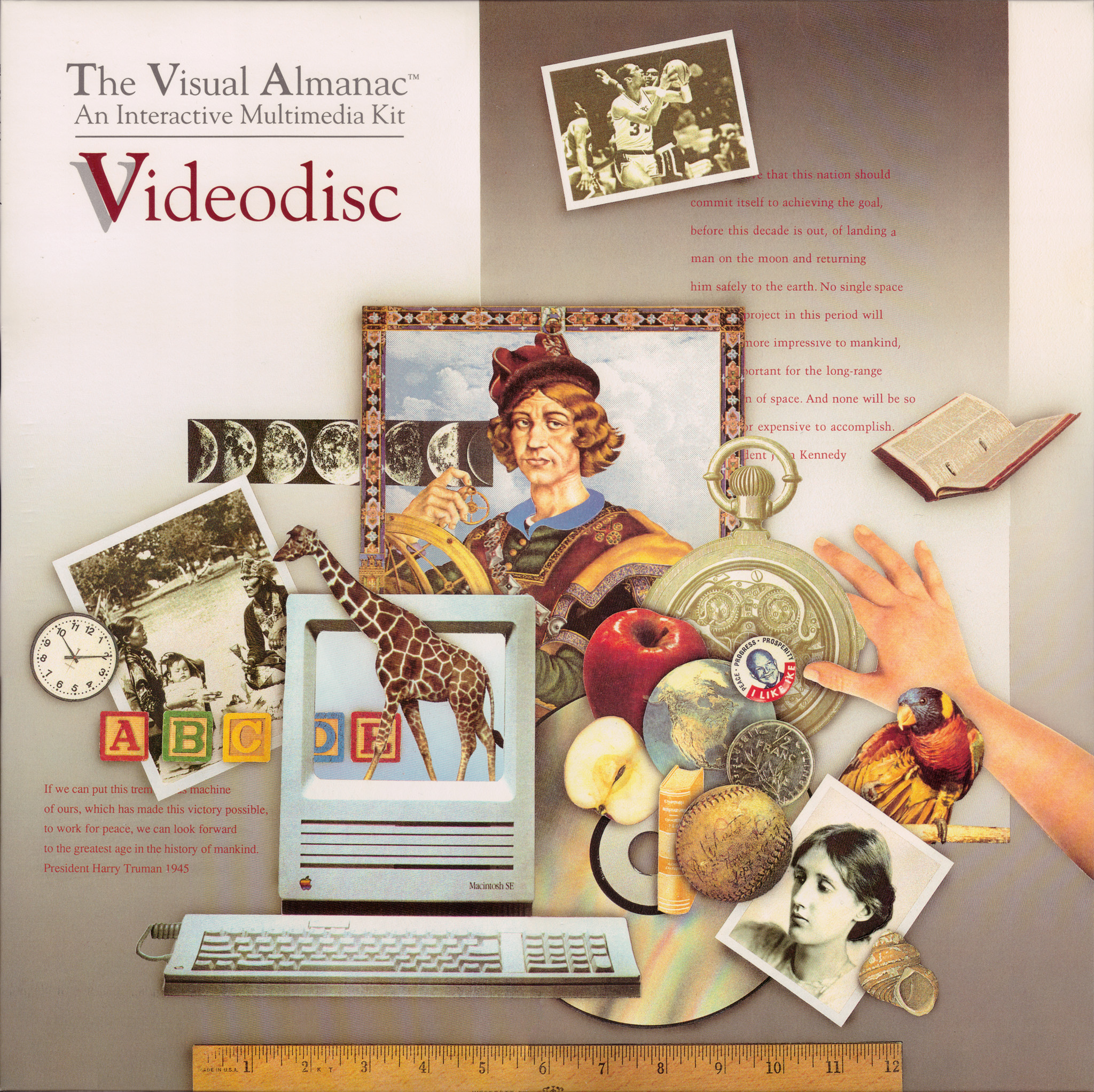
The following picture shows the back cover of the disc:
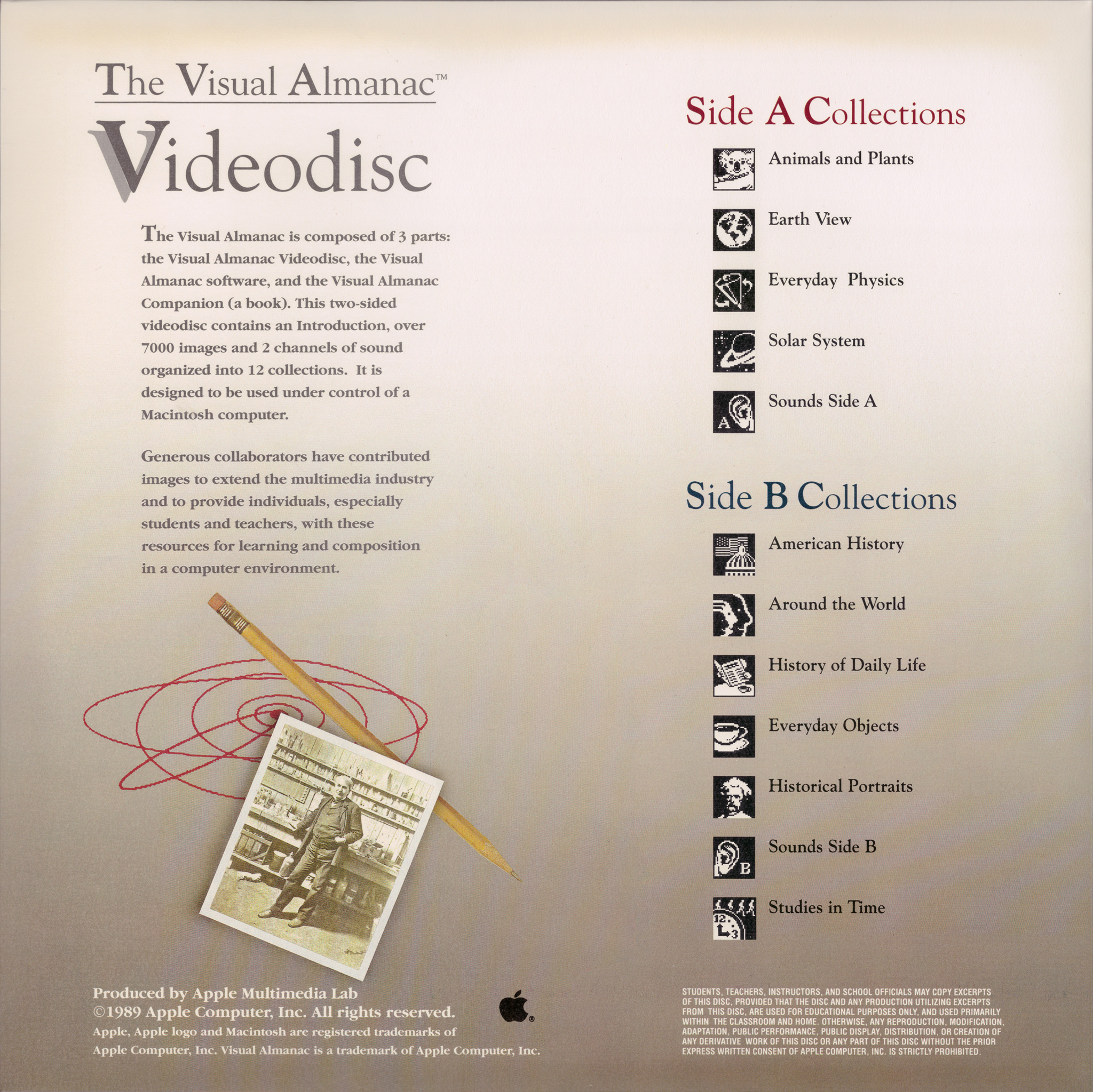
The LaserDisc is divided into Side A and Side B collections. The side A collections are (note the numbers are chapter numbers on the disc):
- 1 - Index to the Collection Side A
- Solar System Collection
- 2 - Earth's Orbit
- 3 - Moon's Orbit
- 4 - Humans in Space
- 5 - Planets
- 6 - Solar System Model
- Everyday Physics Collection
- 7 - Playground Physics
- 8 - Amusement Park Physics
- 9 - Kitchen Physics
- 10 - Objects in Motion
- 11 - Science Grab Bag
- Earth View Collection
- 12 - Weather
- 13 - Calendar
- 14 - Aerial Views
- 15 - Geology and the Elements
- Animal and Plant Collection
- 16 - Plants
- 17 - Invertebrates
- 18 - Fish
- 19 - Reptiles and Amphibians
- 20 - Birds
- 21 - Mammals
- 22 - Evolution
- 23 - Dinosaurs
- 24 - Credits
The side B collections are (note the numbers are chapter numbers on the disc):
- 25 - Chapter stop (required by LaserDisc production)
- 26 - Index to the Collections on Side B
- American History Collection
- 27 - Historical Atlas
- 28 - California Missions
- 29 - Native Americans
- 30 - Civil War
- 31 - American West
- 32 - 20th Century at a Glance
- 33 - Cold War
- Historical Portraits Collection
- 35 - U.S. Presidents
- 36 - Political Leaders
- 37 - Thinkers
- 38 - Artists
- 39 - Miscellaneous
- 40 - Profile: Thomas A. Edison
- 41 - Profile: Marie Curie
- 42 - Profile: Albert Einstein
- 43 - Profile: Franklin D. Roosevelt
- 44 - Profile: Mahatma Gandhi
- 45 - Profile: John F. Kennedy
- 46 - Profile: Martin Luther King, Jr.
- History of Daily Life Collection
- 47 - Food
- 48 - Clothing
- 49 - Shelter
- 50 - Work
- 51 - Transport
- 52 - Trade
- 53 - Media
- 54 - Science
- 55 - Health
- 56 - Leisure
- 57 - Arts
- 58 - Religion
- 59 - Politics
- Around the World Collection
- 60 - A Day in the Life of Japan
- 61 - A Day in the Life of America
- 62 - A Day in the Life of the Soviet Union
- 63 - People Around the World
- 64 - A Day in Rio
- 65 - Weaving in Bolivia
- 66 - China
- 67 - Paths of Things
- Everyday Objects Collection
- 68 - Coins
- 69 - Odds and Ends
- 70 - Connectors
- 71 - Blocks
- 72 - Games
- 73 - Fruit Slices
- 74 - What Is It?
- 75 - Studies in Time Collection
- 76 - Time Expansion
- 77 - Time Keeping
- 78 - Main Streets: Then and Now
The material on the LaserDisc is a collection of pictures, video and sound.
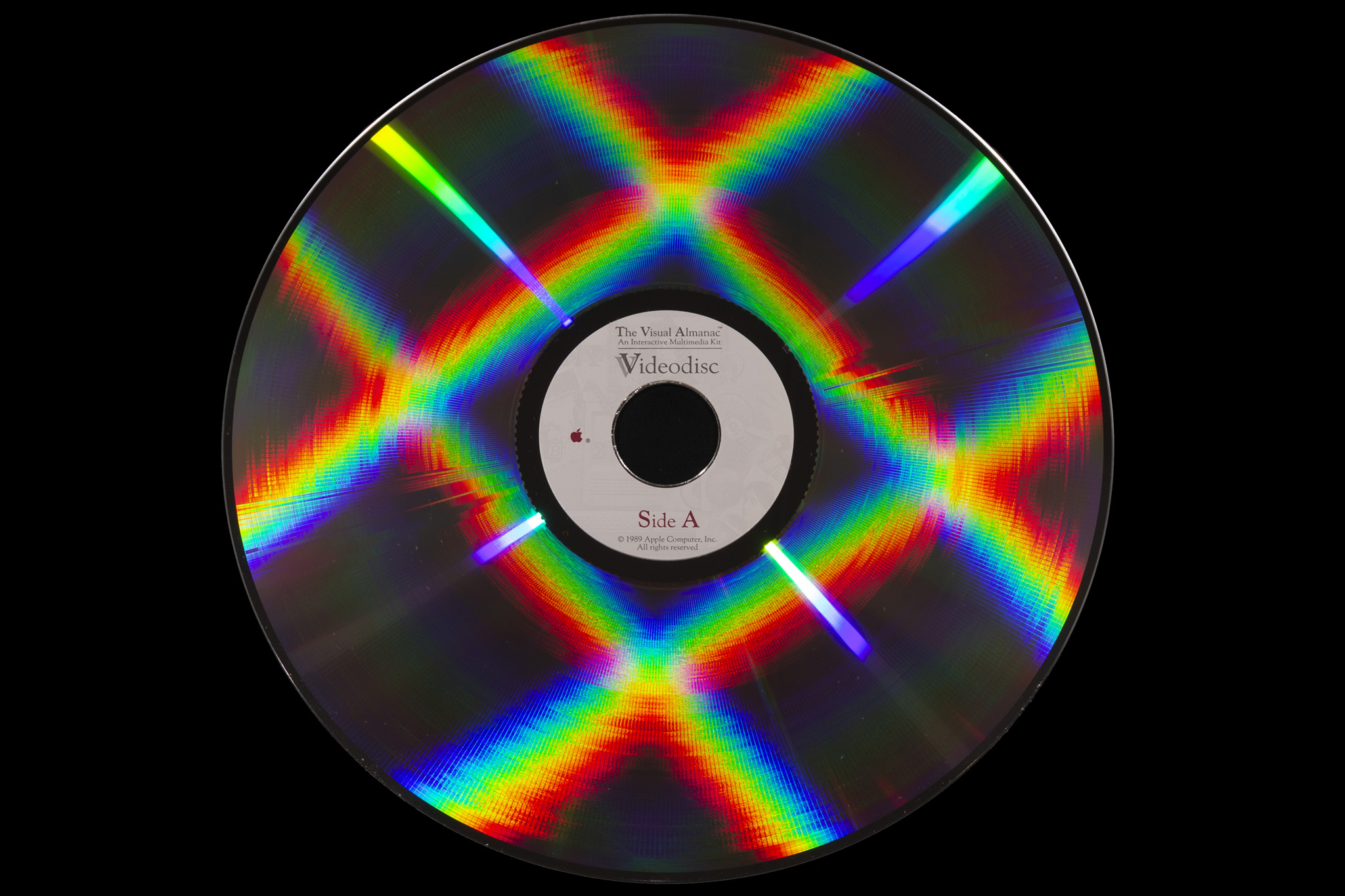
CD-ROM
The included CR-ROM was a multi-mode CD containing both data and audio tracks. The layout of the disc is:
Track Mode Flags Start Length
------------------------------------------------------------
1 DATA 4 00:00:00( 0) 03:19:22( 14947)
2 AUDIO 0 03:19:22( 14947) 58:42:00(264150)
Leadout AUDIO 0 62:01:22(279097)
The audio track is a digital copy of the sound collections found on the LaserDisc and was not directly used by the released version of the Almanac. The data is in Apple HFS format (and is not readable on a Windows PC).
The following picture shows the front cover of the CD-ROM:
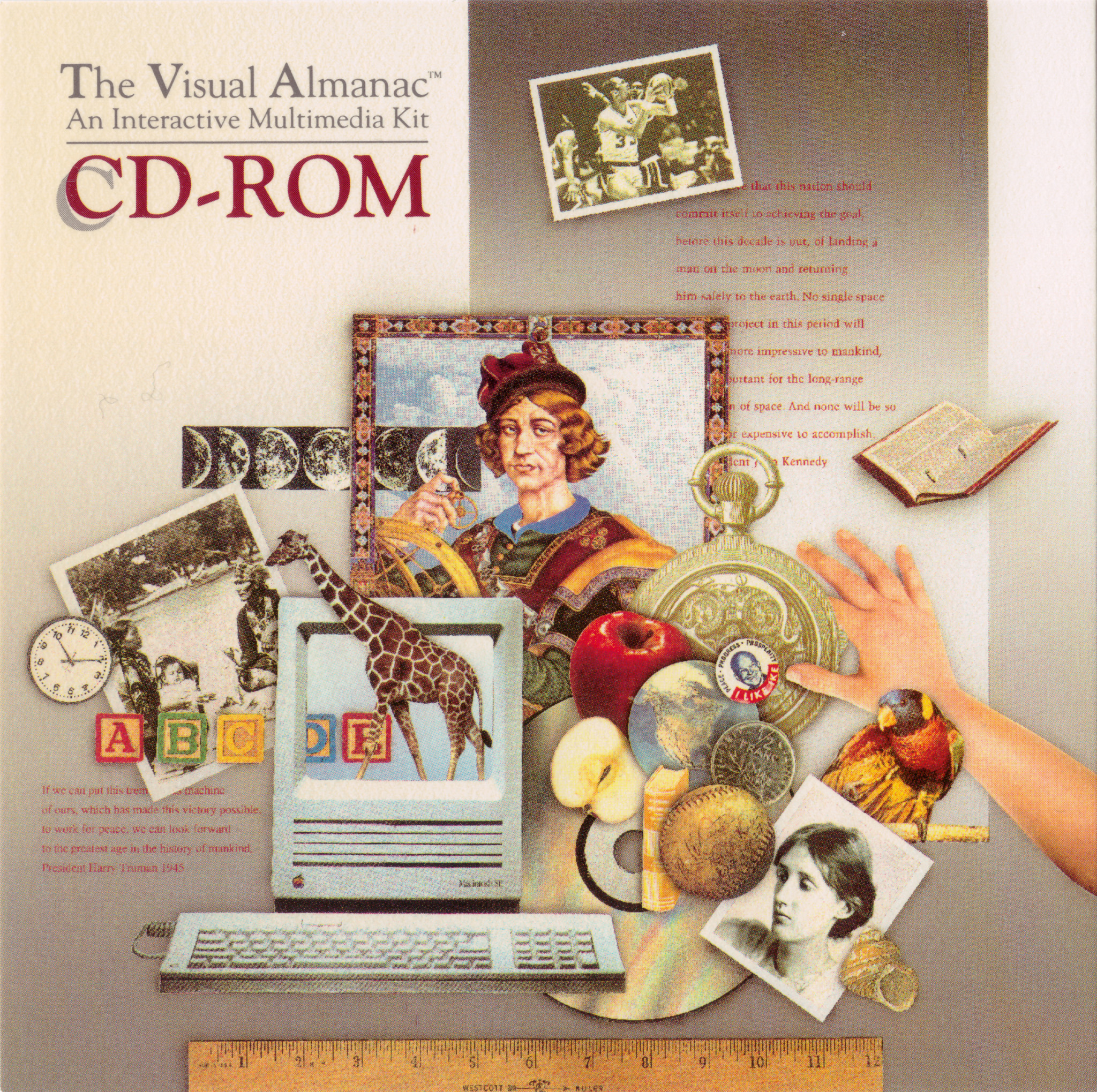
The following picture shows the artwork on the CD-ROM itself:
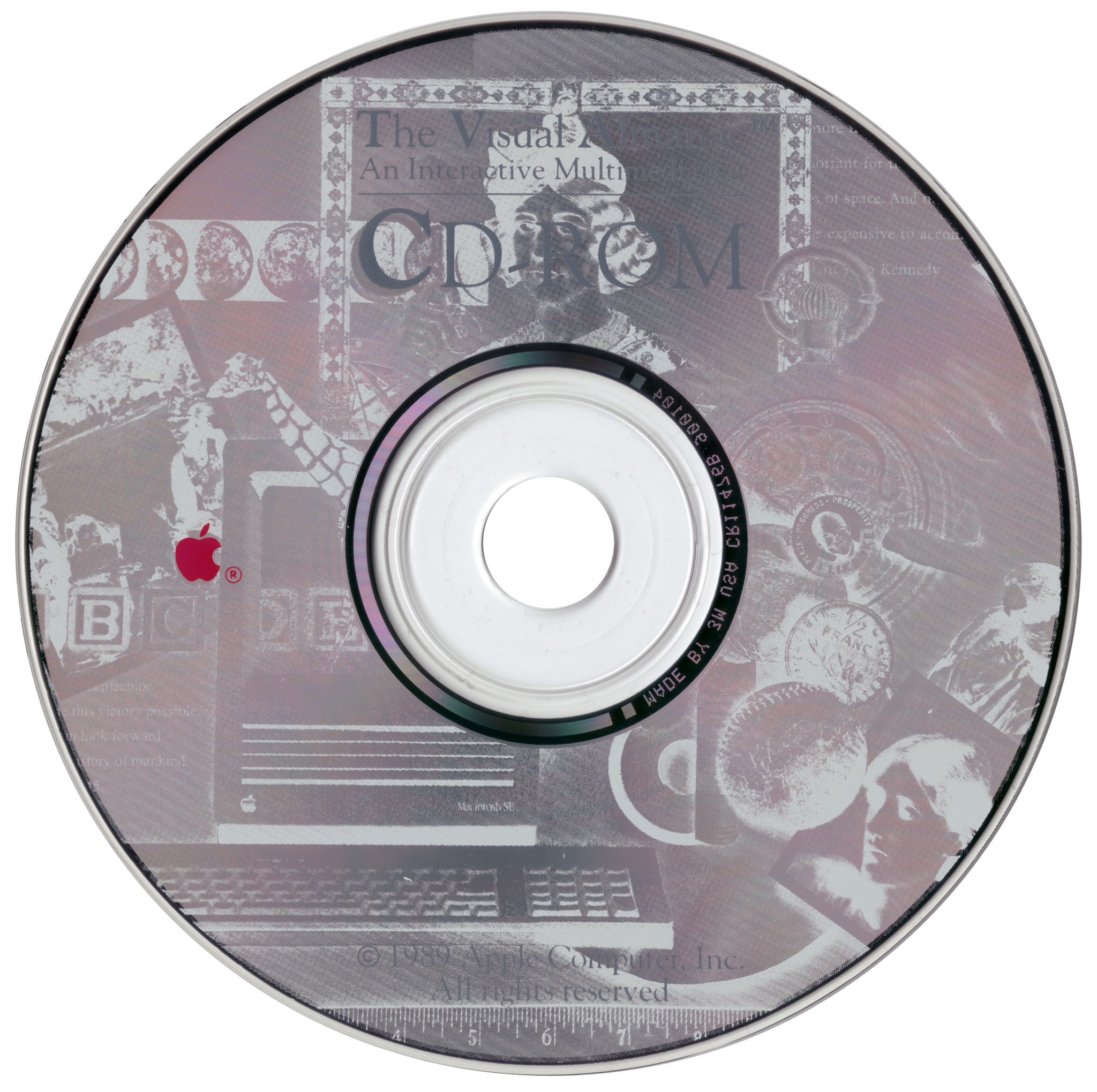
In order to run the CD-ROM it was necessary to install the HyperCard contents of the disc to the computers hard drive (it was not recommended to run the application directly from the CD-ROM itself.
A copy of the CD-ROM's contents can be downloaded from the following link:
The image was produced from the original CD-ROM using the Ubuntu cdrdao application and can be copied to a writeable CD-ROM using the following command (unzip the .bin and .toc files from the supplied zip before executing):
cdrdao write -v 2 --device /dev/sr0 --speed 4 --buffers 64 VisualAlmanac.toc
Floppy Discs
The Visual Almanac kit included 3 floppy discs as shown in the following picture:
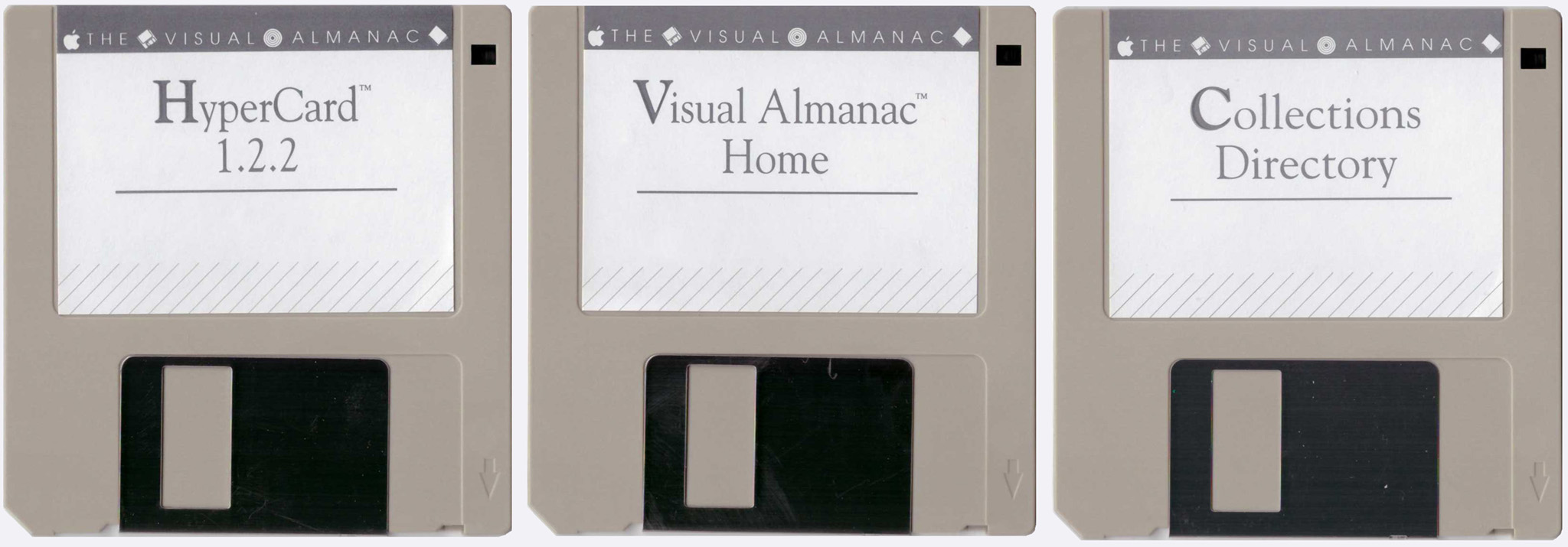
The included floppy disks were:
- HyperCard 1.2.2 - The Apple HyperCard application
- Visual Almanac Home - The Home HyperCard stack
- Collections Directory - Some pre-made collections for use with the Almanac
The contents of all three floppy discs is also included on the CD-ROM (meaning that the floppies were not necessary for most installations). Macintosh .image files for the three (800K Single Density) floppy discs are in the following .sit file (Use StuffIt Expander 5.5 on a Macintosh to uncompress the .sit):
The Visual Almanac Companion
The Visual Almanac Companion is a 216 page book included with the kit covering a wide-range of topics.
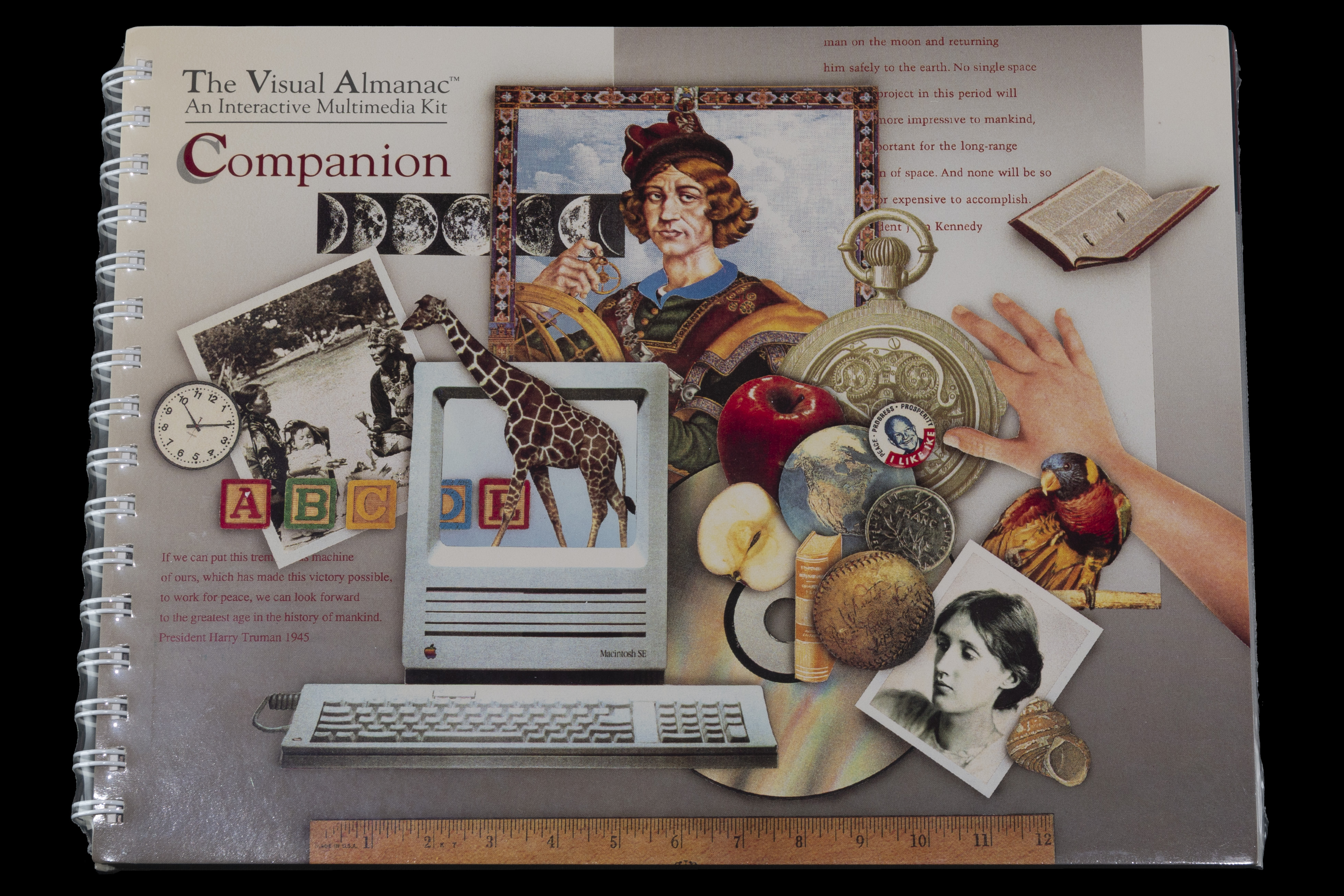
The book is divided into the following chapters:
- Preface
- The Brief View
- The Big Idea
- The Activities
- The Collections
- How to Make a Composition
- Reference
- Epilogue
- Photo and Art Credits
- Index
A copy of the book in PDF format is available from the following link:
LaserDisc Player Serial Lead
The kit also included a serial lead designed to connect a Pioneer player (with a 15 pin D-Sub connector) to the Apple Macintosh mini-DIN serial port:
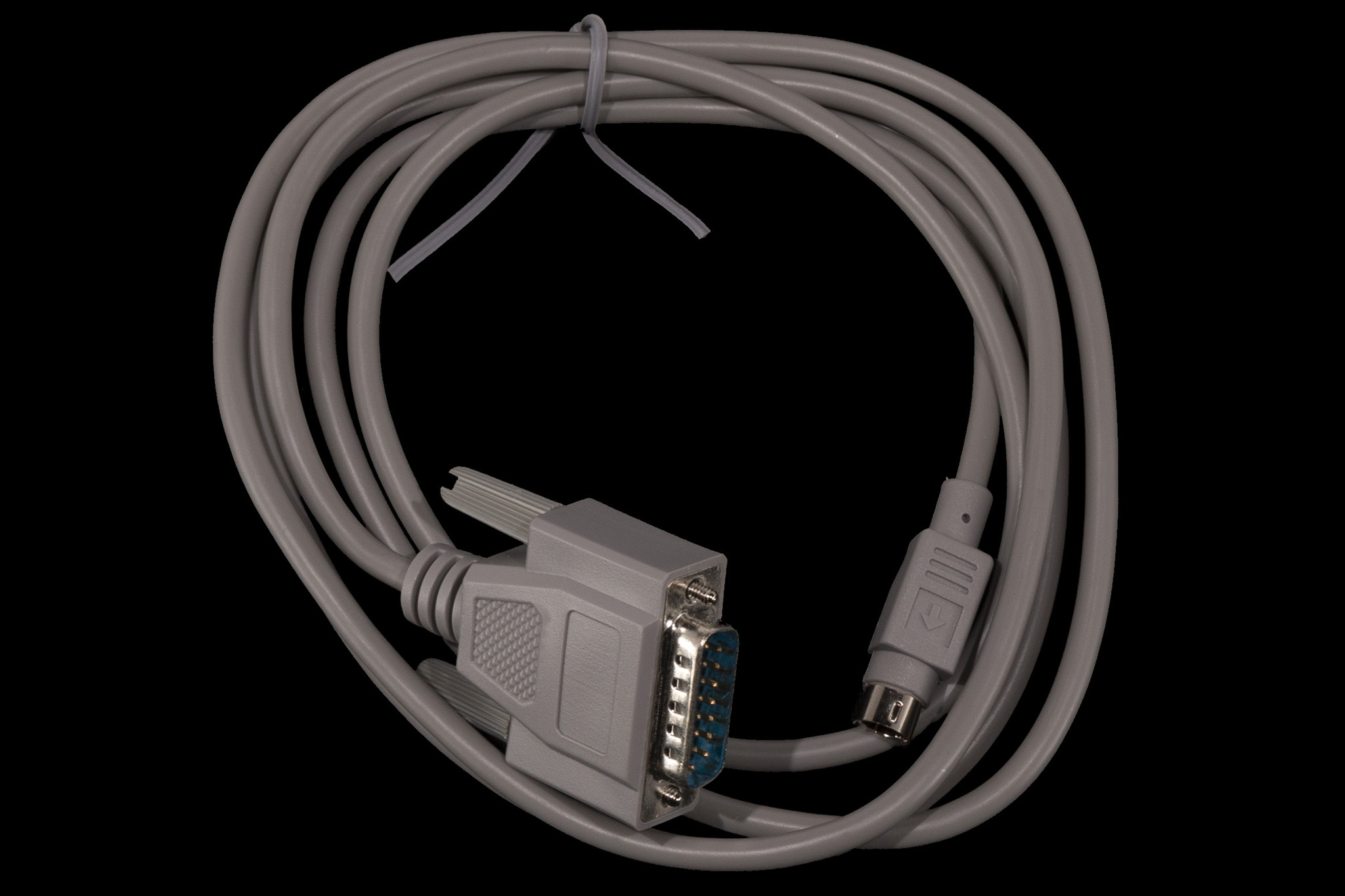
Connection of components
The following diagram shows the overall connection between components of the Visual Almanac:
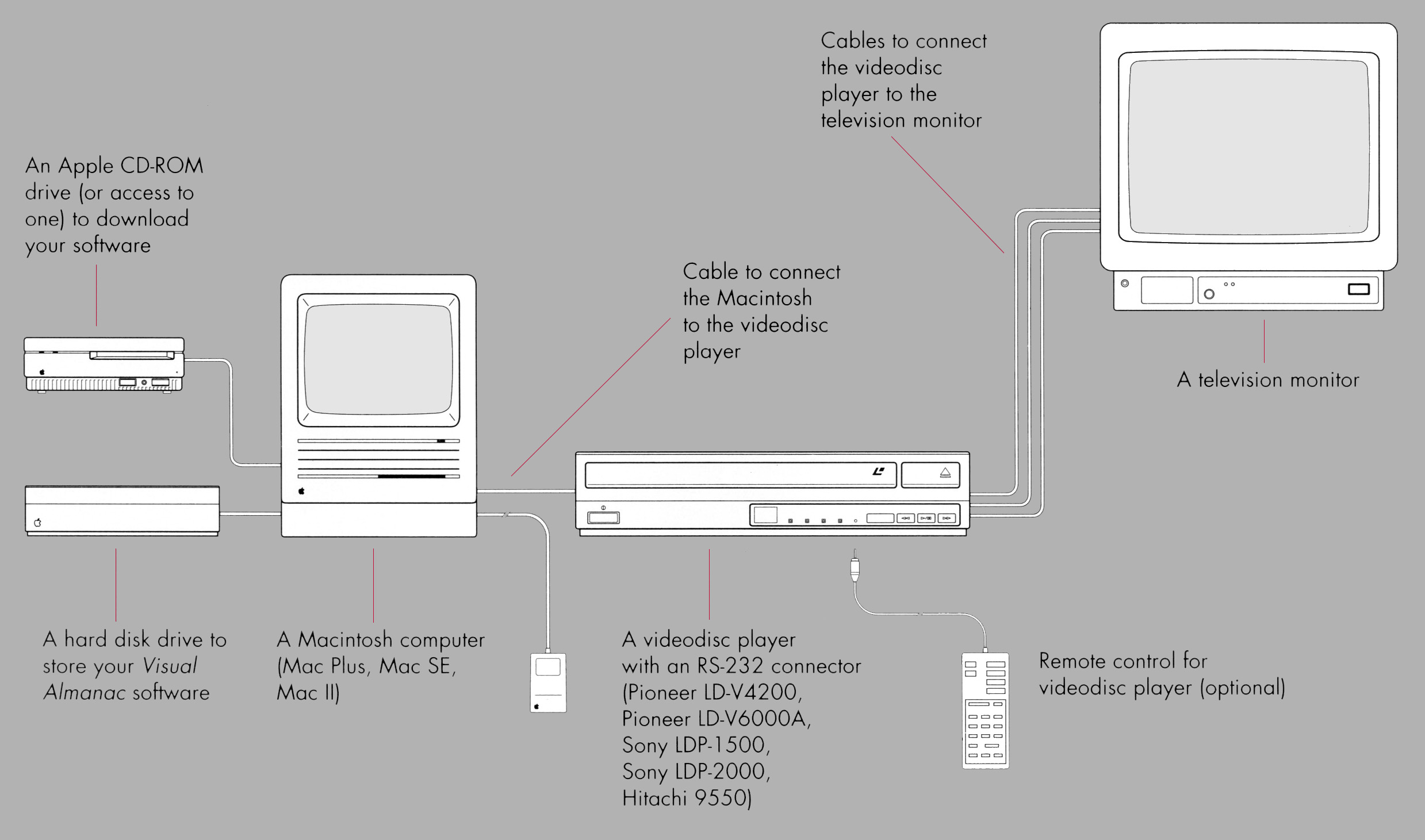
Environment
The Visual Almanac runs well in a System 6 environment and has been tested using 6.0.8L on a Macintosh LC II. Installation requires access to an external CD-ROM drive (in order to copy the hypercard stack to the local hard-drive).
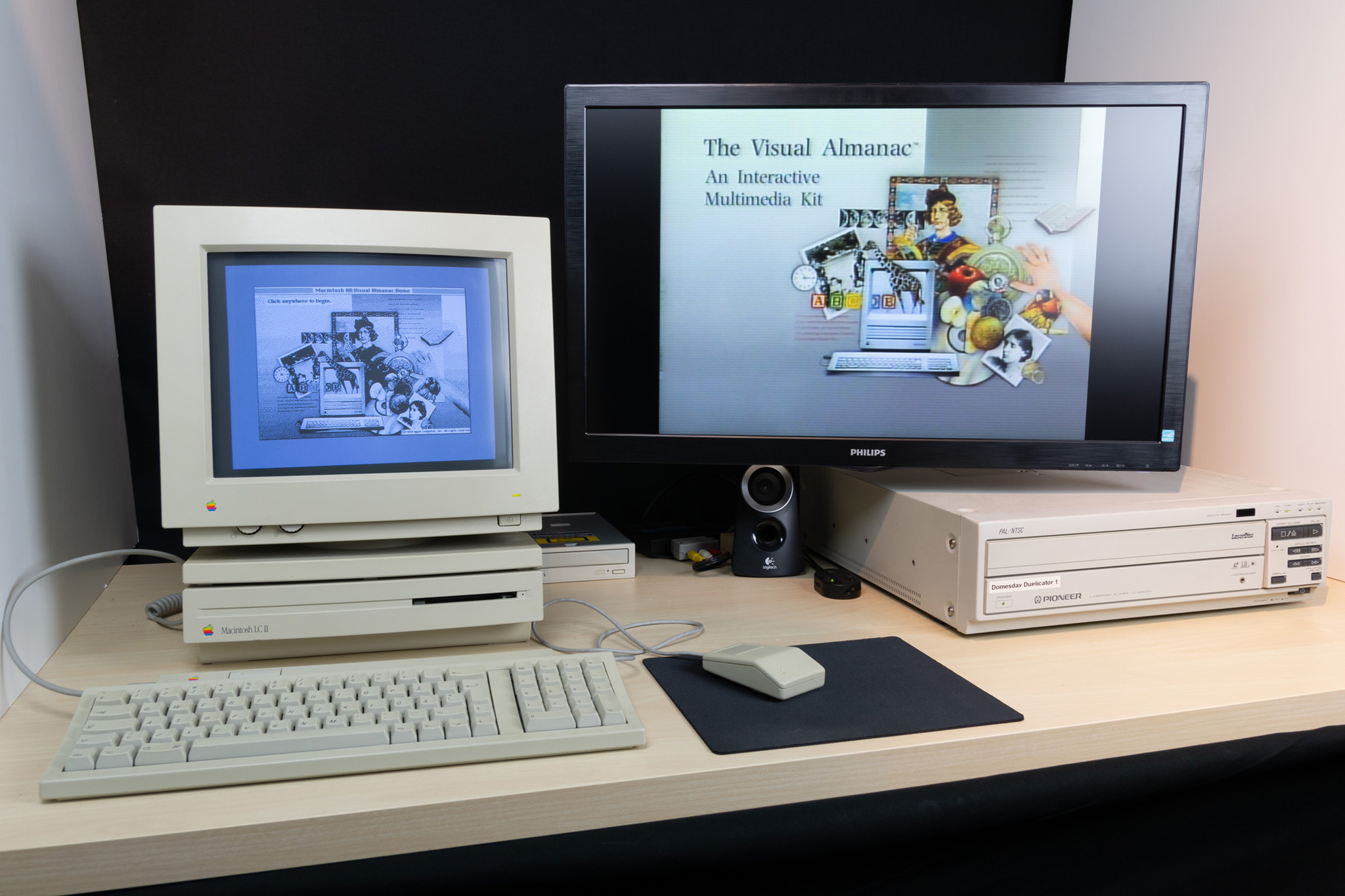
The included serial cable connects from the modem port of the Macintosh to a Pioneer LaserDisc player. When testing a Pioneer LD-V4300D was used which provides the same serial command set as the Pioneer 4200 supported by the Almanac software.
Emulation
It is possible to run the Visual Almanac on a Macintosh emulator such as SheepShaver using MacOS 7.5.3 (select the Quadra 900 mode and appropriate OS ROM). A real LaserDisc player (such as the Pioneer LD-V4300D) can be connected to the applications serial port output or the CD-ROM can be used standalone (with greatly reduced functionality).
For installation instructions and other set-up information please see the reference section in the Visual Almanac Companion guide.
Credits
The following people are credited with the creation of the Visual Almanac (on the LaserDisc - for Companion credits, please see the Companion PDF above):
- Kristina Hooper (Executive Director)
- Robert Mohl
- Fabrice Florin
- Steven Gano
- Margo Nanny
- Kristee Kreitman (Art Director)
- Nick West
- Nancy Hechinger (Principal Writer and Editor)
Note: Extended credits for the Visual Almanac are on the LaserDisc - chapter 24 (side A) and chapter 79 (side B).
